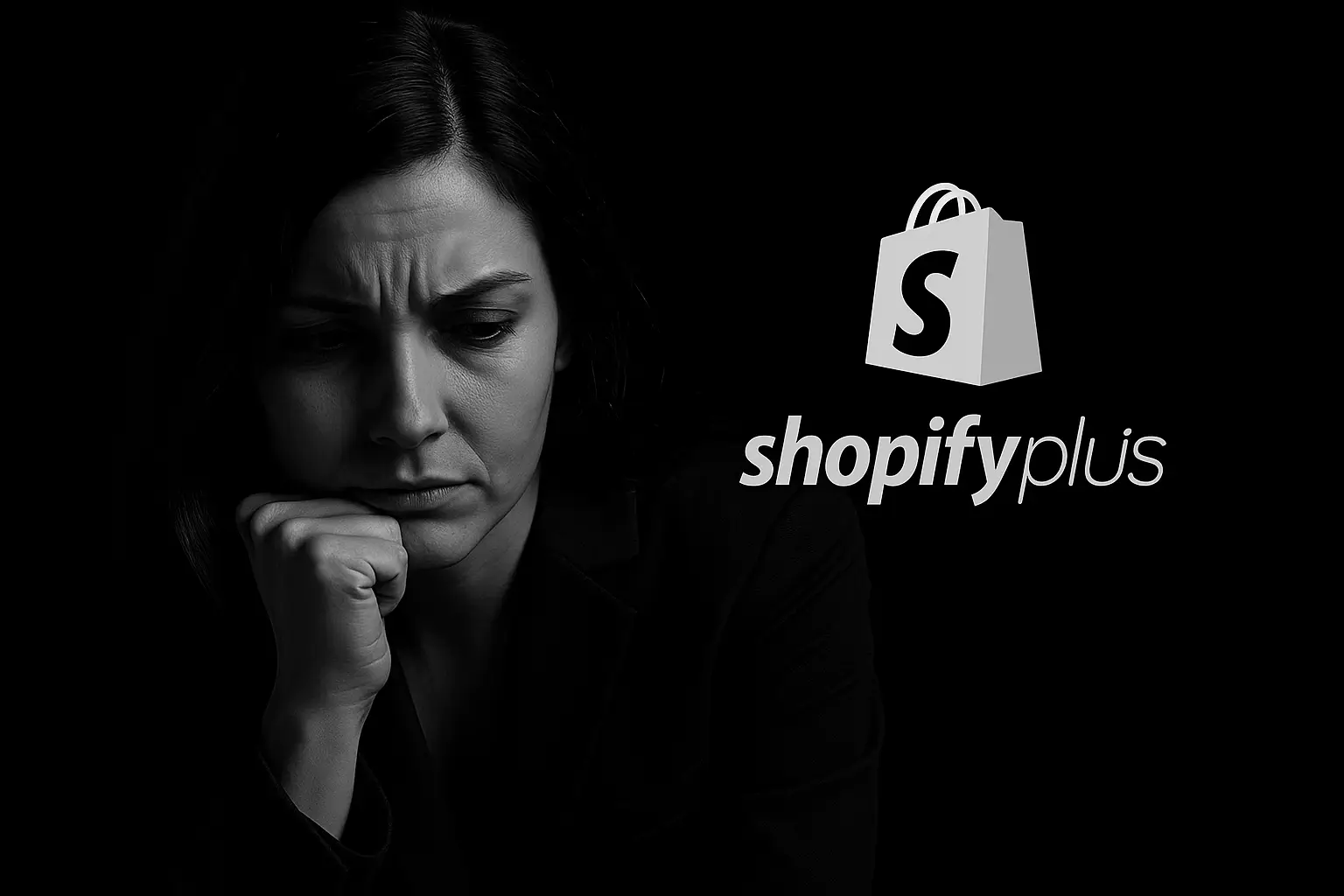Shopify offers two distinct solutions for creating and managing an online store: the standard version and Shopify Plus. Both platforms share the same basic functionality, but Shopify Plus offers advanced capabilities designed for high-volume businesses. This guide compares the two options to help you choose the one that’s right for you.
Who is each version designed for?
Shopify standard is aimed at small and medium-sized businesses just starting out in online sales or managing moderate volumes. The platform offers three packages: Basic at €27/month, Standard at €79/month and Advanced at €289/month. These plans include the essential tools for creating a catalog, configuring payments and managing orders.
Shopify Plus targets large companies and fast-growing brands. The package starts at a minimum of $2,300/month. This version is suitable for companies that process thousands of transactions per month, operate in several international markets, or manage large teams. The break-even point is generally around $800,000 in annual sales.
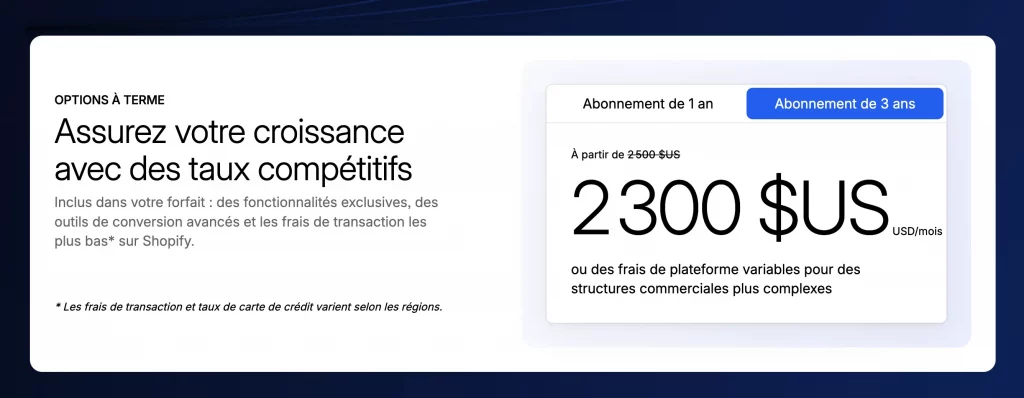
Employee accounts and team management
A major difference between the two versions is the number of accounts used. Shopify Basic limits access to 5 accounts, while Shopify Advanced allows 15. These restrictions can be a problem for growing teams.
Shopify Plus removes this limit and allows you to create an unlimited number of accounts. Each team member can have their own access with personalized permissions. A master administrator account visualizes all sales and operations on all back-offices. This flexibility facilitates the management of large organizations where several departments interact with the platform.
Personalizing the payment process
Shopify standard imposes a standardized checkout process. Users can adjust certain visual elements, but modifications remain limited. This restriction guarantees a consistent experience, but reduces optimization possibilities.
Shopify Plus offers total control over checkout. You can add custom fields, modify payment methods based on the shopping cart, and adjust shipping options in real time. Shopify Scripts allow you to apply automatic discounts or customize the experience according to customer profile. This flexibility helps reduce abandoned baskets and increase conversions.
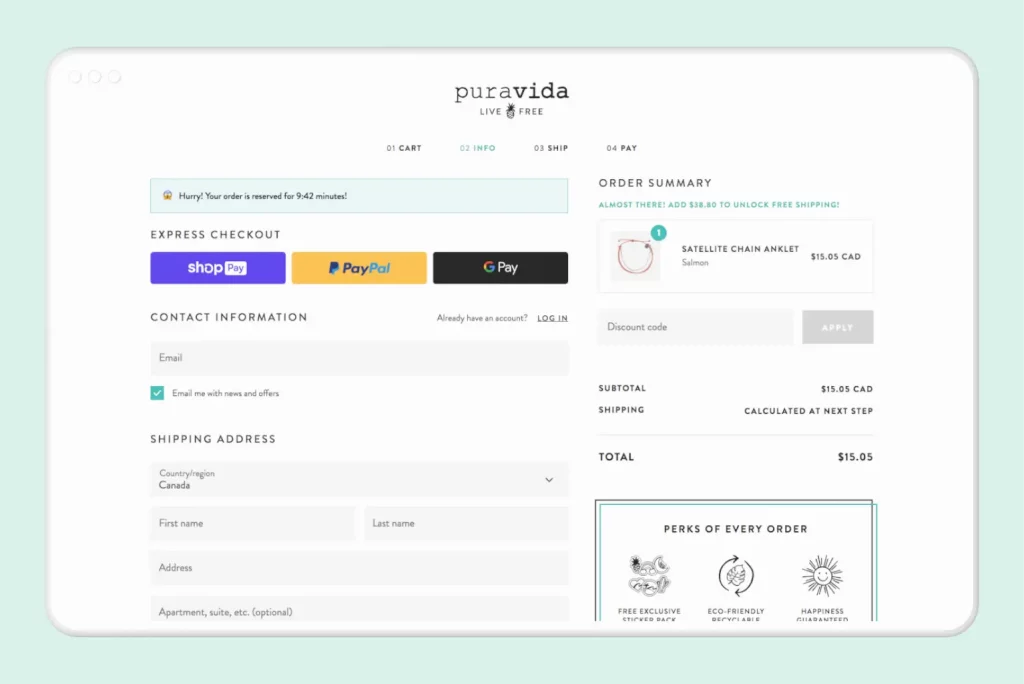
Automation tools
Standard Shopify requires third-party applications to automate repetitive tasks. These extensions work well for simple needs, but can create additional costs and compatibility issues.
Shopify Plus integrates Shopify Flow, a native automation platform. Flow lets you create customized workflows without coding: automatically sending orders to suppliers when stocks fall, assigning tags to customers based on their purchasing behavior, or triggering marketing emails based on specific actions. The Launchpad tool completes Flow by scheduling events such as promotions or product launches. These automations reduce the time spent on administrative tasks.
International and multilingual sales
Shopify standard supports a maximum of two languages for your store. This limitation makes it difficult to expand into multiple markets. Currency management is still possible via apps, but the customer experience may suffer.
Shopify Plus supports up to 20 different languages and allows the creation of 9 additional stores under the same brand. Each store can display prices in the local currency and adapt content to regional specificities. This multilingual capability facilitates international expansion and enhances the experience of non-French-speaking customers.
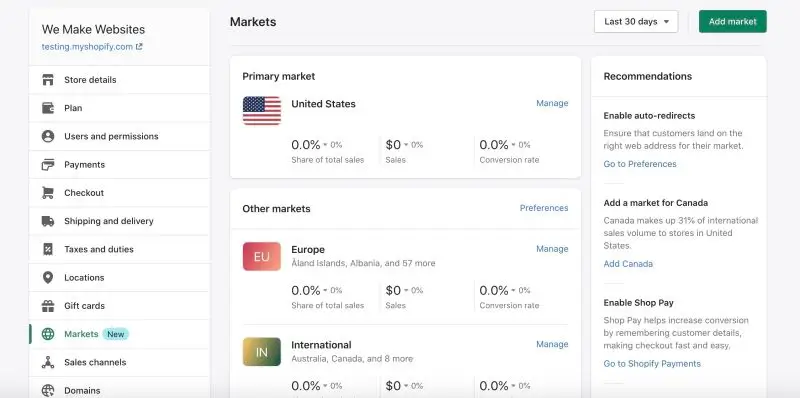
Transaction fees
Shopify applies variable transaction fees depending on your plan: 2% for Basic, 1% for Standard, and 0.5% for Advanced. These fees are in addition to the payment processor’s commissions and reduce your margins, especially on high-volume orders.
Shopify Plus reduces these fees to 0.15% of sales volume. For a business generating $100,000 in monthly sales, the savings represent $850 per month with the Plus plan compared to the Basic plan. This difference partially offsets the higher monthly cost of the Plus subscription.
Guidance and support
Shopify offers telephone, email and live chat support to all its users. Responses generally arrive within 24 hours. This standard support solves common problems, but may lack responsiveness for urgent situations.
Shopify Plus assigns a dedicated launch engineer during initial setup. This single contact guides you through migration, integration of third-party tools, and the search for specialized partners. A merchant success manager then takes over to optimize your use of the platform. 24/7 priority support guarantees rapid responses, even during busy periods like Black Friday.
B2B sales capabilities
Shopify standard focuses on direct-to-consumer (B2C) sales. B2B functionality remains limited, requiring third-party applications to handle bulk pricing or large orders.
Shopify Plus integrates a Wholesale Channel that creates a separate, password-protected storefront. This parallel store allows you to display different prices for professional buyers, create customized catalogs, and manage specific payment terms. So you can operate simultaneously in B2C and B2B from a single platform.
Performance and technical limits
Shopify standard limits API throughput to 2 requests per second. This restriction can create slowdowns during traffic peaks or when integrating complex tools. Sites can efficiently handle up to several hundred orders per day.
Shopify Plus removes API throughput limits and supports up to 10,000 transactions per minute. This ensures stability during flash sales or highly anticipated product launches. Performance remains constant even with high volumes. Standardized APIs facilitate integration with external systems such as ERP, CRM or marketing automation tools.
Analysis and reporting tools
Shopify standard generates reports on sales, top products, traffic sources and customer return rates. This data provides a useful overview, but segmentation options remain basic.
Shopify Plus provides customizable reports with in-depth analysis. You can segment sales by region, product category, or distribution channel. The platform integrates with advanced analytics tools to track customer behavior in detail and measure the effectiveness of marketing campaigns. This data enables you to make decisions based on concrete information rather than intuition.
Exclusive applications
Shopify standard gives access to theApp Store, which contains thousands of extensions to extend your store’s functionality. These applications cover most common needs, but create additional monthly costs.
Shopify Plus unlocks exclusive applications: Script Editor to customize the shopping cart and checkout with code, Transporter to import data from other platforms, and Bulk Account Invite Sender to massively invite customers to activate their accounts. These native tools work better than third-party applications and add no monthly fees.
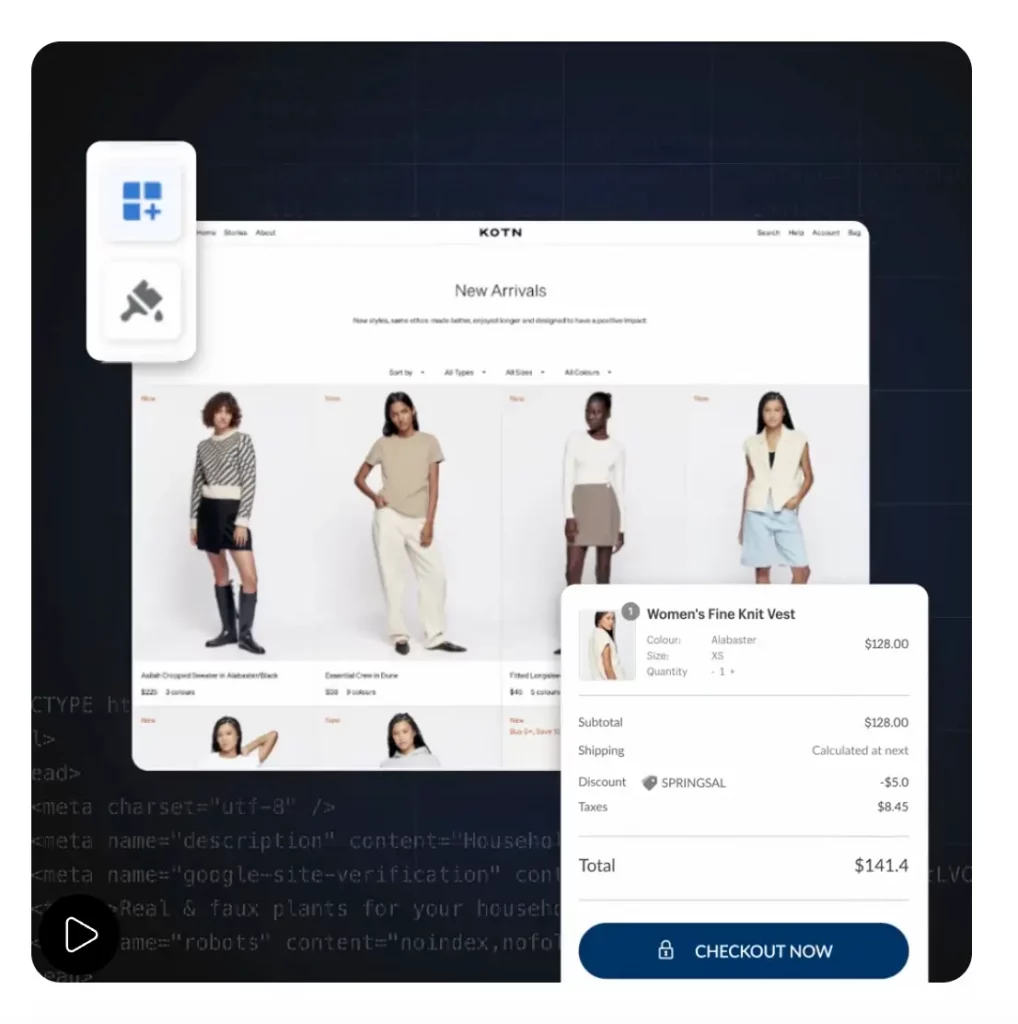
Pricing and business model
Shopify charges fixed monthly amounts: €27 for Basic, €79 for Standard, and €289 for Advanced. These prices remain constant regardless of your sales volume. This predictability makes budget management easier for small businesses.
Shopify Plus applies variable pricing based on sales volume: minimum $2,300/month or 0.25% of monthly sales, capped at $40,000/month. A store generating $2 million in monthly sales would pay $5,000/month. This structure becomes advantageous only for companies that far exceed the minimum sales threshold.
When to migrate from Shopify to Shopify Plus
Switching to Shopify Plus is justified when your business encounters the limitations of the standard version. Signs include: more than 15 employees who need access to the platform, slowdowns during traffic peaks, complex automation needs that third-party applications don’t solve, or impending international expansion.
The economic calculation is simple. If the savings in transaction costs and time saved through automation exceed the additional monthly cost, the migration becomes profitable. For most companies, this break-even point lies between 500,000 and 1 million euros in annual sales. Below this level, Shopify Advanced’s functionality is generally sufficient.
Shopify vs Shopify Plus comparison chart
| Criteria | Shopify Basic | Shopify Standard | Shopify Advanced | Shopify Plus |
|---|---|---|---|---|
| Monthly price | 27 € | 79 € | 289 € | Starting at $2,300 |
| Transaction fees | 2 % | 1 % | 0,5 % | 0,15 % |
| Employee accounts | 5 | 5 | 15 | Unlimited |
| Supported languages | 2 | 2 | 2 | 20 |
| Additional stores | 0 | 0 | 0 | 9 |
| PLC flow limit | 2/second | 2/second | 2/second | No limits |
| Transactions per minute | Standard | Standard | Standard | 10 000 |
| Customize checkout | Limited | Limited | Limited | Complete |
| Shopify Flow | No | No | No | Yes |
| Launchpad | No | No | No | Yes |
| Script Editor | No | No | No | Yes |
| Wholesale channel | Via apps | Via apps | Via apps | Native |
| Customer support | Standard | Standard | Standard | 24/7 priority |
| Dedicated account manager | No | No | No | Yes |
| Customized reports | Basics | Intermediaries | Advanced | Very advanced |
| Recommended target | Start | SMES | Established company | Large company |
FAQ
Can I test Shopify Plus before committing?
Shopify Plus does not offer a free trial like the standard version. You need to contact the sales team to discuss your needs and get a personalized demo. The team assesses whether your project fits the Plus user profile before offering you a contract. This approach prevents small businesses from paying for features they won’t use.
How do I migrate from Shopify to Shopify Plus?
The migration preserves all your data: products, customers, orders and content. Shopify assigns a launch engineer who plans the transition and configures the new features. The process generally takes between 2 and 4 weeks, depending on the complexity of your store. Your site remains accessible throughout the migration, so there are no service interruptions.
Does Shopify Plus work with my existing management system?
Shopify Plus integrates with most ERP, CRM and accounting software via robust APIs. Common connections include SAP, Microsoft Dynamics, Salesforce and NetSuite. If your system uses proprietary technology, the technical team can develop a custom integration. These connections automatically synchronize inventory, orders and customer data between your different tools.
What happens if my sales volume drops after I subscribe to Plus?
You remain committed to the $2,300/month minimum even if your sales decrease. The Shopify Plus contract generally operates on an annual basis. If your business declines over the long term, you can talk to your account manager about downgrading to Shopify Advanced. This downgrade involves losing access to exclusive Plus features.
Do standard Shopify applications work on Shopify Plus?
All Shopify App Store applications remain compatible with Shopify Plus. You keep your current extensions during migration. Some apps offer Plus-specific versions with advanced features, but this is not mandatory. Plus-native applications (Flow, Launchpad, Script Editor) can even replace certain third-party extensions, reducing your monthly costs.
Conclusion
Shopify and Shopify Plus share the same technical basis, but are aimed at different business profiles. Shopify is suitable for entrepreneurs and SMEs managing moderate volumes and relatively simple operations. The three packages (Basic, Standard, Advanced) offer sufficient flexibility to support initial growth.
Shopify Plus becomes relevant when technical constraints, automation needs or international expansion exceed the capabilities of the standard version. The high monthly cost is justified only by the savings and value created by the advanced features. Evaluate your real needs before committing yourself, as most businesses don’t need Shopify Plus to succeed in e-commerce.
Choosing between Shopify and Shopify Plus is a technical decision that directly impacts your business performance. If you operate in the fashion, luxury or beauty sectors, working with a specialized Shopify web agency can speed up your set-up and optimize your configuration from the outset. KNR supports brands in the creation, migration and optimization of Shopify and Shopify Plus stores, adapting the platform to the specifics of your business to boost conversions.
